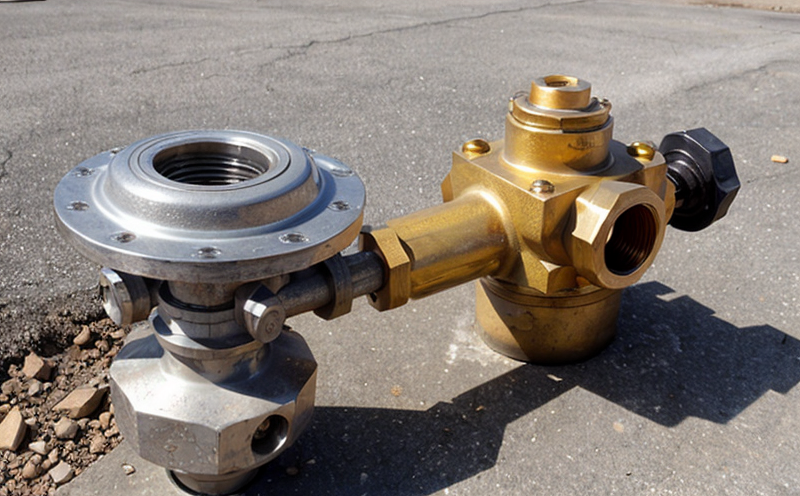Landing valve inspection
The landing valve is a critical component in fire safety and protection systems. Its role is to control the flow of water or other extinguishing agents into specific areas within a building, ensuring that firefighting efforts are efficient and effective. The landing valve inspection process involves a detailed examination of the valve's integrity, functionality, and compliance with relevant standards.
During an inspection, the focus is on several key parameters which ensure the valve can perform its critical function during emergencies:
- Flow Control: Ensuring that the valve can regulate water flow accurately to meet fire protection requirements.
- Closure Mechanism: Checking the integrity of the closure mechanism, including any seals or gaskets to ensure they are not compromised and can maintain a watertight seal.
- Material Integrity: Inspecting the valve body for signs of corrosion, cracks, or other defects that could affect its performance during critical moments.
- Instrumentation: Ensuring all instrumentation is functioning correctly, including pressure gauges and temperature indicators.
- Safety Features: Checking any safety features such as overpressure relief valves to ensure they are operational and meet relevant standards.
The inspection process adheres closely to international standards such as ISO 16726 for fire hydrants, which includes landing valves. These standards provide a framework for testing and ensuring that the valve meets all necessary criteria for performance and safety. By following these guidelines, we can ensure that the valve is not only compliant but also reliable under real-world conditions.
For quality managers and compliance officers, understanding the importance of regular inspections cannot be overstated. A malfunctioning landing valve during a fire could lead to significant property damage or even loss of life. For R&D engineers and procurement teams, knowing the specific parameters required for testing is essential for selecting and maintaining high-quality valves.
Why It Matters
The reliability and functionality of landing valves are crucial in fire safety systems. These valves ensure that water or other firefighting agents can be directed precisely to the areas where they are needed most during a fire. Without proper inspection, there is a risk that these valves may not function as intended when called upon.
Regular inspections help maintain the integrity of the valve and identify potential issues before they escalate into critical failures. This proactive approach saves time, money, and resources by preventing costly repairs or replacements after an incident has occurred. In addition to ensuring compliance with international standards like ISO 16726, regular inspections also contribute to a safer environment for occupants of buildings equipped with these systems.
The importance of landing valve inspection extends beyond mere regulation adherence; it plays a vital role in protecting lives and properties. By identifying weaknesses early on through routine checks, we can enhance overall safety measures within facilities relying heavily on fire protection technologies. This preventive maintenance strategy not only improves operational efficiency but also builds confidence among stakeholders regarding the reliability of installed systems.
Eurolab Advantages
At Eurolab, our expertise in landing valve inspection sets us apart from other testing laboratories. With years of experience and state-of-the-art facilities at our disposal, we offer unparalleled services tailored specifically for this sector. Here’s how we can add value:
- Comprehensive Testing: We provide a thorough examination covering all aspects mentioned above ensuring that your landing valve meets the highest standards.
- Expertise and Knowledge: Our team comprises highly skilled professionals who stay updated with the latest advancements in fire safety technology, allowing us to deliver accurate assessments based on current best practices.
- Compliance Assurance: By adhering strictly to international standards such as ISO 16726, we ensure that your valves not only pass inspections but also meet or exceed regulatory requirements.
- Rapid Turnaround Times: We understand the urgency associated with fire safety systems and strive to complete our inspections promptly so you can return to normal operations quickly.
- Continuous Improvement: Our commitment to excellence means we continuously seek ways to improve our methods, ensuring that each inspection is conducted more efficiently than the last.
- Certified Reports: Upon completion of every inspection, you receive a detailed report certifying compliance and highlighting any areas needing attention or improvement.
- Custom Solutions: Whether your facility requires periodic inspections or one-off assessments due to specific circumstances, we offer flexible solutions suited to your needs.
- Sustainability Focus: We recognize the importance of sustainable practices in all our operations, including those related to fire safety systems. Our aim is to contribute positively towards environmental conservation efforts without compromising on quality or performance standards.
Choose Eurolab for landing valve inspection services because we combine technical proficiency with unwavering dedication to customer satisfaction.
Quality and Reliability Assurance
The quality and reliability of fire safety systems, particularly those involving landing valves, are paramount. At Eurolab, our approach ensures that these systems remain dependable and efficient throughout their lifecycle. We achieve this through rigorous testing procedures designed to identify potential issues early on.
Our process begins with meticulous preparation, where each valve undergoes detailed examination under controlled conditions mimicking real-world scenarios. This includes checking for leaks, verifying closure tightness, assessing material integrity, and validating the operation of safety features like overpressure relief valves. All tests are conducted using sophisticated equipment calibrated to meet international standards.
After completing these evaluations, our team generates comprehensive reports summarizing findings along with recommendations for any necessary repairs or replacements. These documents serve as valuable resources both during inspections and post-inspection follow-up activities. They help facility managers make informed decisions about maintenance schedules and budget allocations while ensuring ongoing compliance with relevant regulations.
By leveraging our advanced technology and experienced personnel, we guarantee that every landing valve inspected by Eurolab meets stringent quality benchmarks set forth by industry leaders like ISO 16726. This commitment to excellence extends beyond just meeting minimum requirements; it reflects a broader philosophy of safeguarding public safety through reliable fire protection systems.





